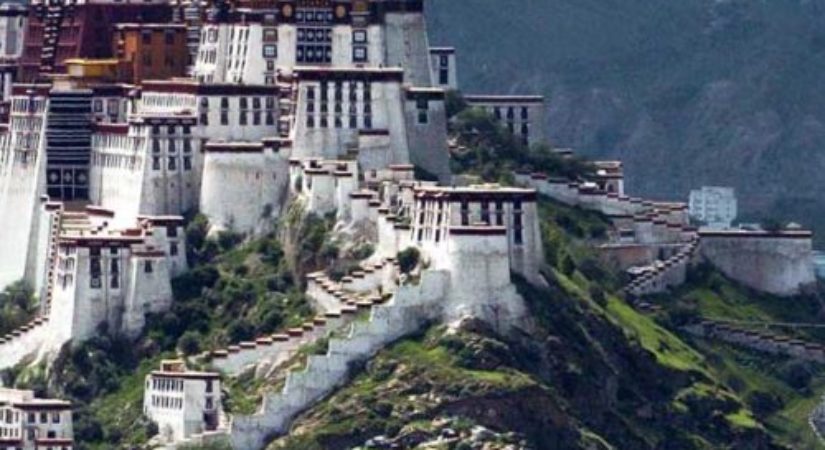Overview
Tibet Lhasa Tour takes us to the most alluring destinations of Tibet. Yes, Tibet is often referred to as the "forbidden land" due to its historical isolation and the restrictions imposed on access by the Chinese government in certain periods. It is renowned for its rich cultural heritage, ancient religion (particularly Tibetan Buddhism), stunning landscapes, and unique arts. Situated on the Tibetan Plateau, often called the "Roof of the World," Tibet boasts an average elevation of around 4,000 meters (13,000 feet) above sea level.
This high altitude contributes to its breathtaking landscapes. It also presents challenges for visitors due to the thinner air and potential altitude sickness. The region's Tibetan Buddhism, with its monasteries, rituals, and spiritual practices, has deeply influenced its culture and arts. Intricate thangka paintings, colorful tapestries, vibrant festivals like Losar (Tibetan New Year). And the chanting of mantras are among the cultural highlights that showcase Tibet's distinctive heritage.
Potala Palace
The palace’s rooms, numbering around 1,000, include the Dalai Lama’s living quarters, as well as murals, chapels, and tombs. The surrounding peaks of Lhasa range between the 4400 m to 5300 m above the sea level and the Lhasa city are commanded by three main hills –Marpori, Chakpori & Barmari. The weather of the Lhasa is very unique where between July to August. the season is rainy as more than 300 days sunshine.
However, it is important to note that political sensitivities and the policies of the Chinese government. Which have influenced the access, preservation of Tibetan culture, and the freedom of its people. This has led to various geopolitical issues and controversies surrounding Tibet's autonomy and cultural identity. Lhasa Sightseeing thus is a combination of the ancient cultural experience . Along with the view of the magnificent arid landscapes and the giant Himalayan Peaks. The palace you are referring to is likely the Potala Palace in Lhasa, Tibet. Tibet Lhasa Tour is one of the most iconic landmarks in Tibet and a UNESCO World Heritage Site.
Trip Outline
Day 01: Arrival to Lhasa.
Day 02: Explore Lhasa (Potala Palace– Jokang temple)
Day 03: Explore Lhasa (Derpu monastery)
Day 04: Final Departure.
Detail itinerary
2.45 By flight Dinner Lhasa Hotel
You will be greeted by your Tibetan guide (who can speak English well) once you arrive in Lhasa Gonggar airport or train station. It is 68km from airport to Lhasa city, around 1.5 hour by drive and 15km takes 20 minutes’ drive from train station. You will have a good rest to acclimatize the high altitude in Lhasa. Overnight at Lhasa
B/L/D Lhasa Hotel
After breakfast at hotel, visit to Potola Palace, Potala Palace is the worldwide known cardinal landmark of Tibet. The massive structure itself contains a small world within it. Mostly it is renowned as residence of the Dalai Lama lineages (Avalokiteshvara). In after noon, visit to Jokang Temple, Jokang temple is the most sacred shrine in Tibet which was built in 7th century and located at the heart of old town in Lhasa, the circuit around it called Barkhor street, which is a good place to purchase souvenirs. Both of them are the focal points of pilgrims from entire Tibetan world. Overnight at Lhasa
B/L/D Lhasa Hotel
After breakfast at hotel, visit to Derpu monastery Situated at the foot of the Mountain Gambo Utse, 5 kilometers (3.1 miles) from the western suburb of Lhasa, The monastery was established in 1416 by Tsong Khapa’s disciple Jamyang Qoigyi, in 1546, the third Dalai was welcomed as the first Living Buddha into it. Afternoon ,You will drive to Sera monastery Located at the foot of Tatipu Hill in the northern suburb of Lhasa City, Sera Monastery is one of three famous monasteries in the city. It is dedicated to the Gelugpa or Yellow Hat Sect, a branch of Tibetan Buddhism, founded by Tsong Khapa. Jamchen Chojey, in 1419 during the Ming Dynasty (1368-1644). The monastery was named Sera which mean wild rose in the Tibetan language, because the hill behind it was covered with wild roses in bloom when it was built. In evening see its famous monks debating between 3pm to 5pm (not available on Sunday). Overnight at Lhasa
Breakfast
After breakfast at hotel, you and your guide will drive you to Lhasa airport or train station. It is the time to say farewells to your guide and driver. The trip ends.
What's included?
- Tibet Permits, China visa
- Air tickets/Train/Private Transportation Kathmandu to and from Tibet.
- Private professional Local Tibetan English-speaking tour guide
- The private vehicle with driver and Luggage Transfers.
- All necessary Tibet travel permits.
- All accommodations, based on double-occupancy with attached bathroom in city and Guesthouse or tent in remote areas.
- Meals, as noted in the itinerary. (B-Breakfast, L-Lunch, D-Dinner)
- Admission fees and activity expenses, as noted in the itinerary
- Service Charge (the planning, handling, operational and communication charges) & government taxes.
- Tourists Accident/Casualty Insurance
What's not included?
- Sightseeing not listed in the itinerary.
- Meals not listed in the itinerary.
- Personal expenses such as laundry, drink, fax, telephone call, optional tour activities, etc
- Gratuities, tips to guides, drivers, bellboys, etc.
- Excess Baggage Charges, Single room supplement.
Price Starts
US $1250
$ 1300
Free Cancellation
Hassle-Free Booking
Best Price Guarantee

